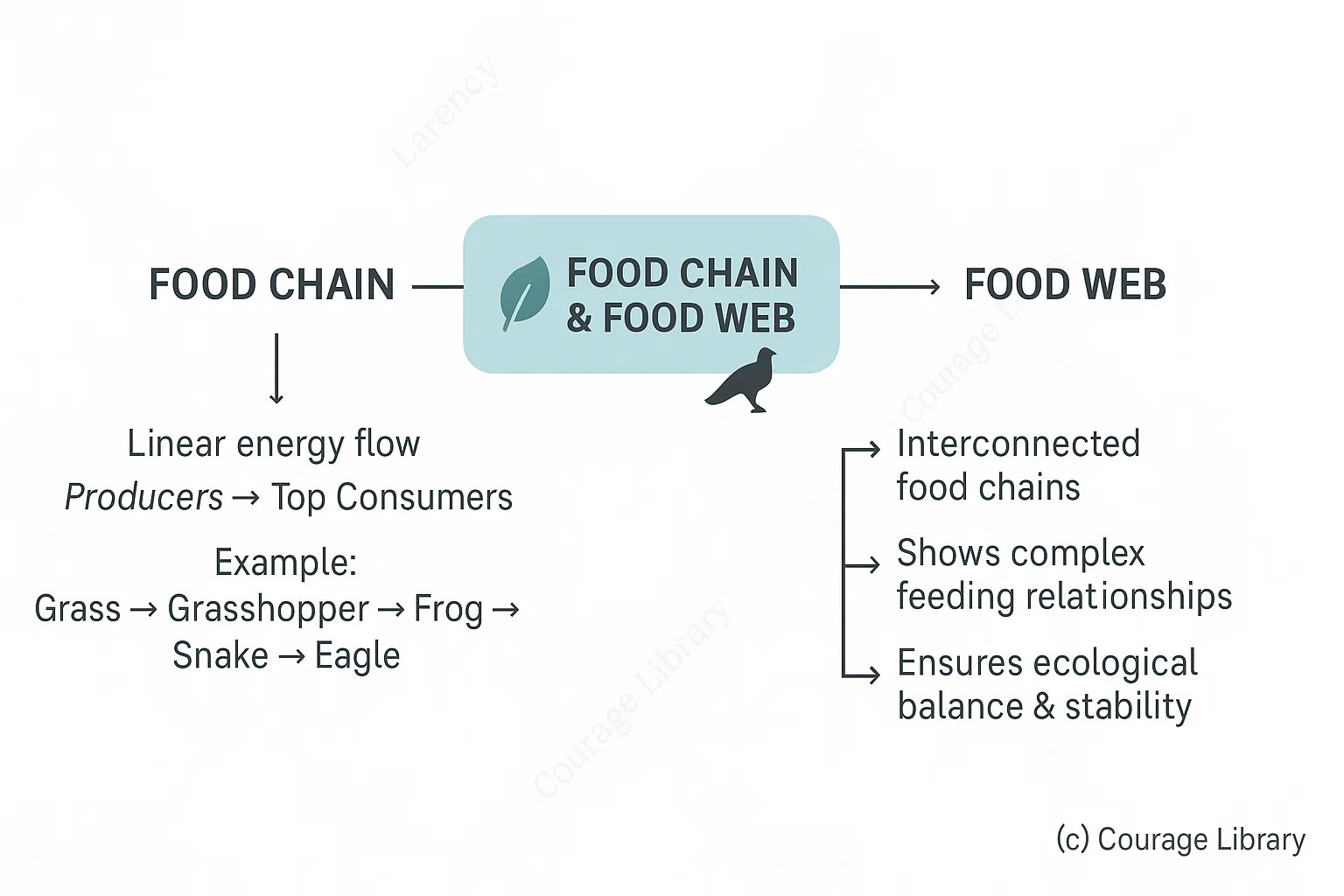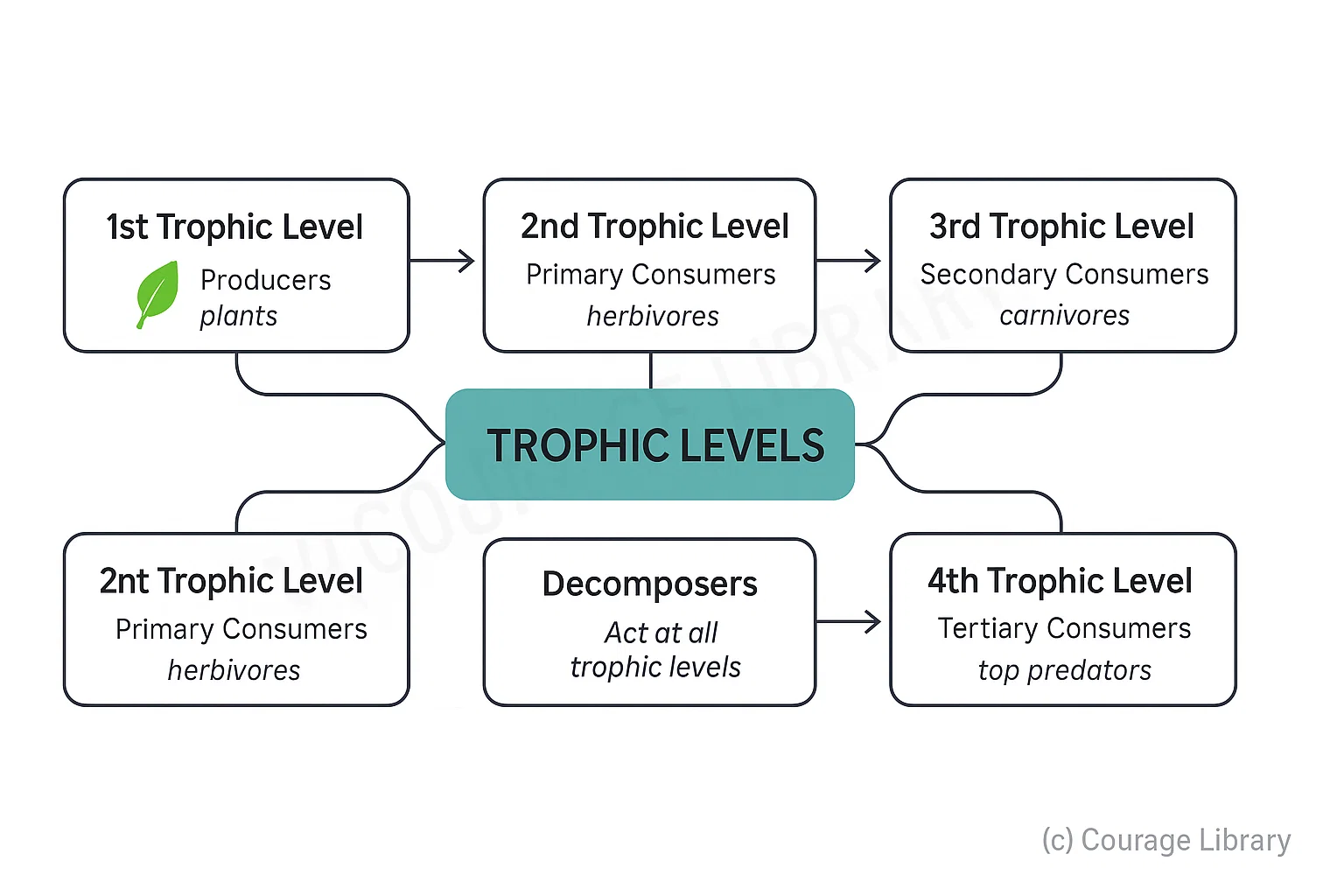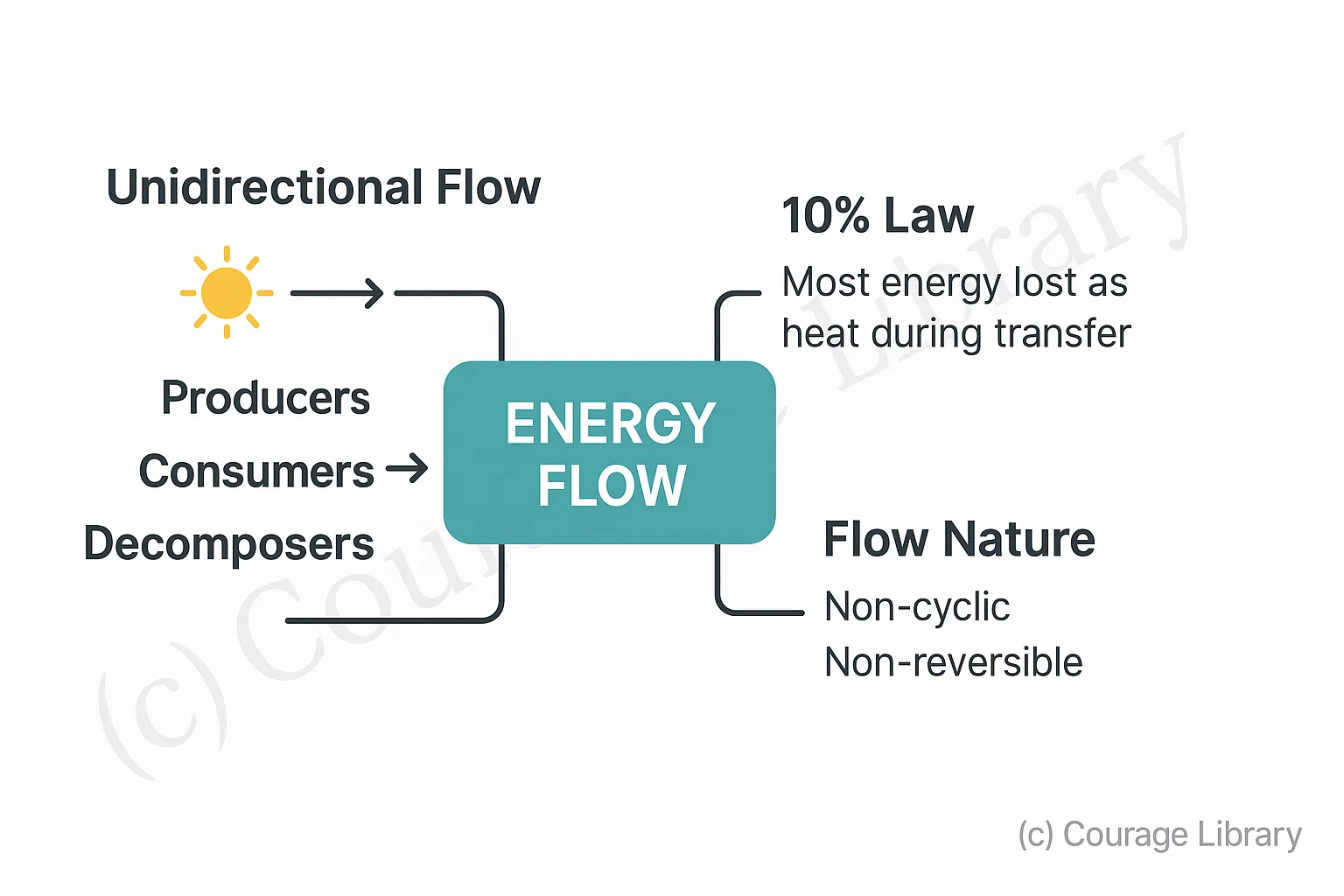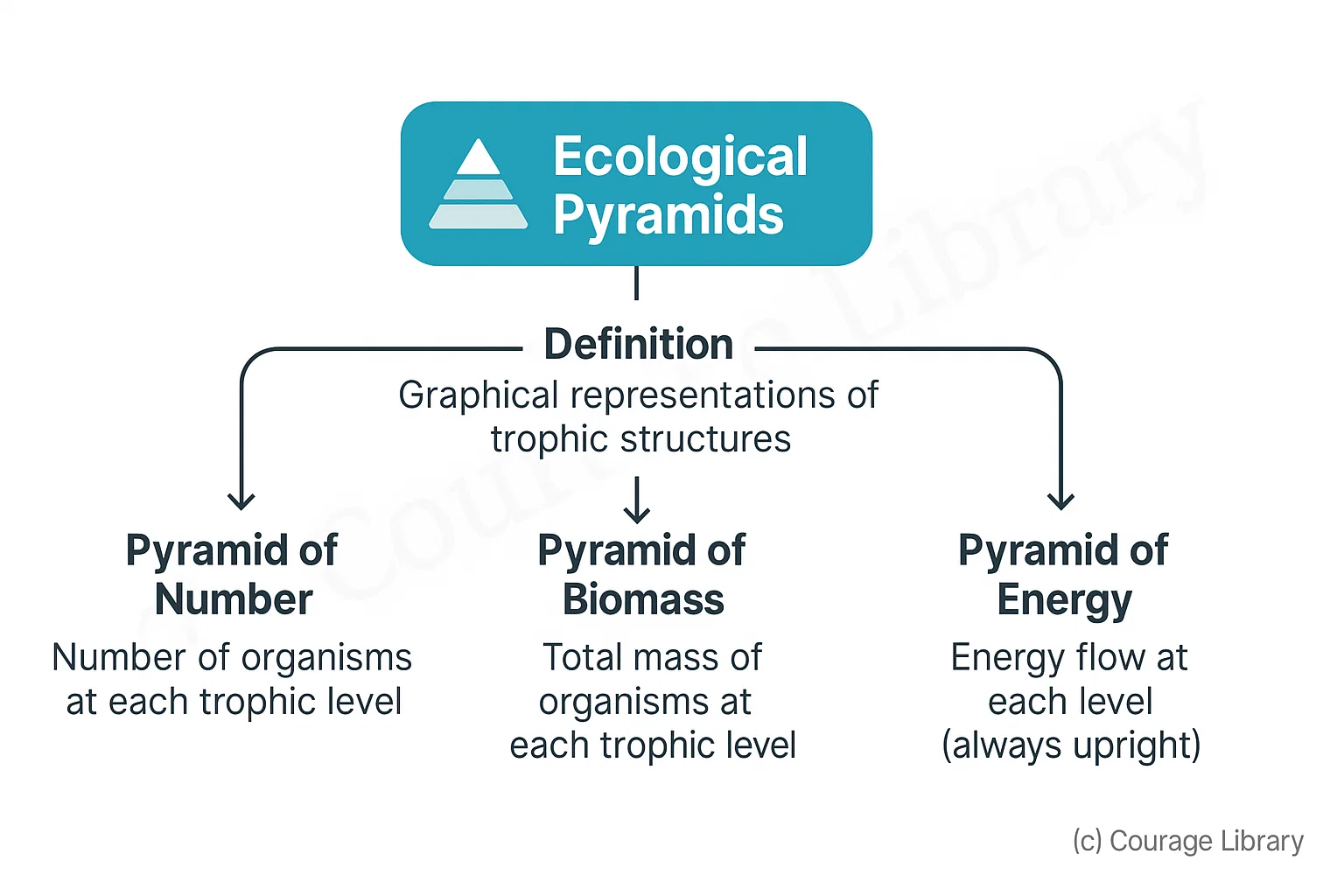SSC CGL - Detailed Guide 2025
Self-Paced Course

Ecosystem
Reference: NCERT Class 9-12, Lucent GK
1. Structure of Ecosystem
An ecosystem is a functional unit where living organisms interact with each other and with the non-living environment.
Definition: An ecosystem is a self-sustaining unit comprising biotic (living) and abiotic (non-living) components that interact with each other through energy flow and nutrient cycling.
| Component | Description | Examples |
|---|---|---|
| Producers | Autotrophs that synthesize food using sunlight or chemicals | Green plants, phytoplankton |
| Consumers | Heterotrophs that feed on other organisms | Herbivores (deer), Carnivores (lion), Omnivores (humans) |
| Decomposers | Break down dead organic matter and recycle nutrients back to the environment | Bacteria, Fungi, Earthworms |
Note: Decomposers play a vital role in nutrient recycling.
2. Functions of Ecosystem
Ecosystems perform two key functions: Energy Flow and Nutrient Cycling.
a) Food Chain & Food Web
- Food Chain: Linear flow of energy from producers to top consumers.
→ Example: Grass → Grasshopper → Frog → Snake → Eagle - Food Web: Interconnected food chains showing complex feeding
relationships in an ecosystem.
→ Ensures ecological balance and stability.


b) Trophic Levels
Trophic levels represent positions in the food chain:
- 1st Trophic Level -- Producers (plants)
- 2nd -- Primary Consumers (herbivores)
- 3rd -- Secondary Consumers (carnivores)
- 4th -- Tertiary Consumers (top predators)
- Decomposers act at all levels
Note: Energy transfer between trophic levels is only ~10% efficient (10% Law by Lindeman).
c) Energy Flow
- Unidirectional: Flows from sun → producers → consumers → decomposers.
- Governed by the 10% Law — most energy is lost as heat during transfer.
- Energy flow is non-cyclic and non-reversible.


d) Ecological Pyramids
Graphical representations of trophic structures:
| Type | Description |
|---|---|
| Pyramid of Number | Number of organisms at each trophic level |
| Pyramid of Biomass | Total mass of organisms at each trophic level |
| Pyramid of Energy | Energy flow at each level (always upright) |
Note: Energy pyramid is always upright; others may be inverted (e.g., pyramid of number in a tree ecosystem).
3. Types of Ecosystems
Ecosystems can be classified as:
a) Terrestrial Ecosystems
| Type | Characteristics |
|---|---|
| Forest | High biodiversity; dense tree cover; heavy rainfall |
| Grassland | Dominated by grasses; moderate rainfall; supports herbivores |
| Desert | Dry, arid; extreme temperatures; xerophytic vegetation |
b) Aquatic Ecosystems
| Type | Characteristics |
|---|---|
| Freshwater | Low salinity; includes rivers, lakes, ponds, streams |
| Marine | High salinity; oceans and seas; stable biodiversity; supports plankton |
| Estuarine | Transition between river and sea; highly productive and nutrient-rich zone |
Note: Estuaries act as nurseries for many marine species due to nutrient availability and calm waters.
Quick Exam Highlights
- • Grasslands in India: Tropical (Savanna type), e.g., Banni Grasslands (Gujarat)
- • Coral reefs are marine ecosystems rich in biodiversity
- • Mangroves are coastal wetland ecosystems — found in Sundarbans, Mahanadi Delta, etc.
- • Pond ecosystem = most studied natural ecosystem in ecology
Master Ecology Concepts with Us!
Join Courage Library for comprehensive study materials and expert guidance.
Be a Couragian!